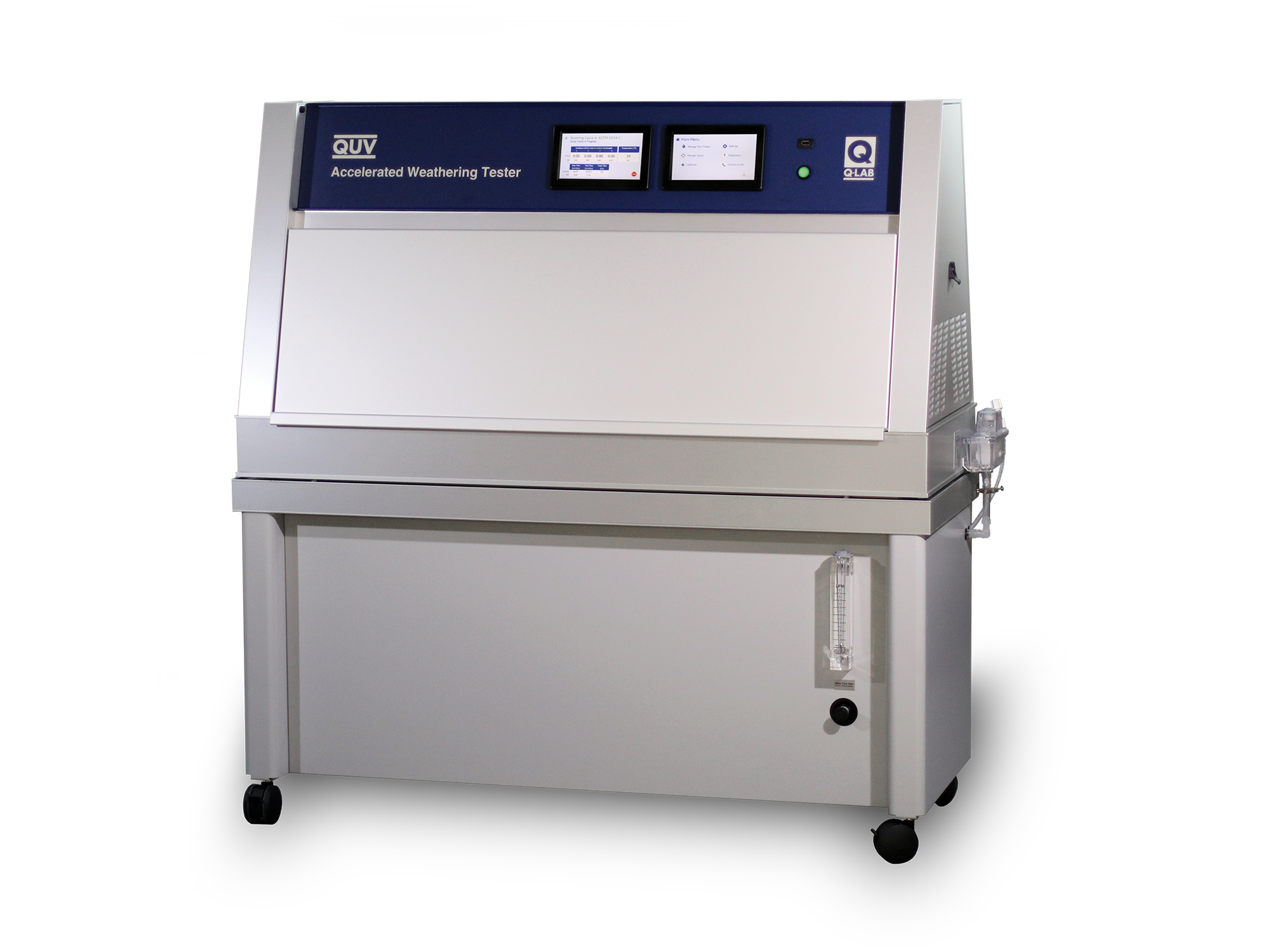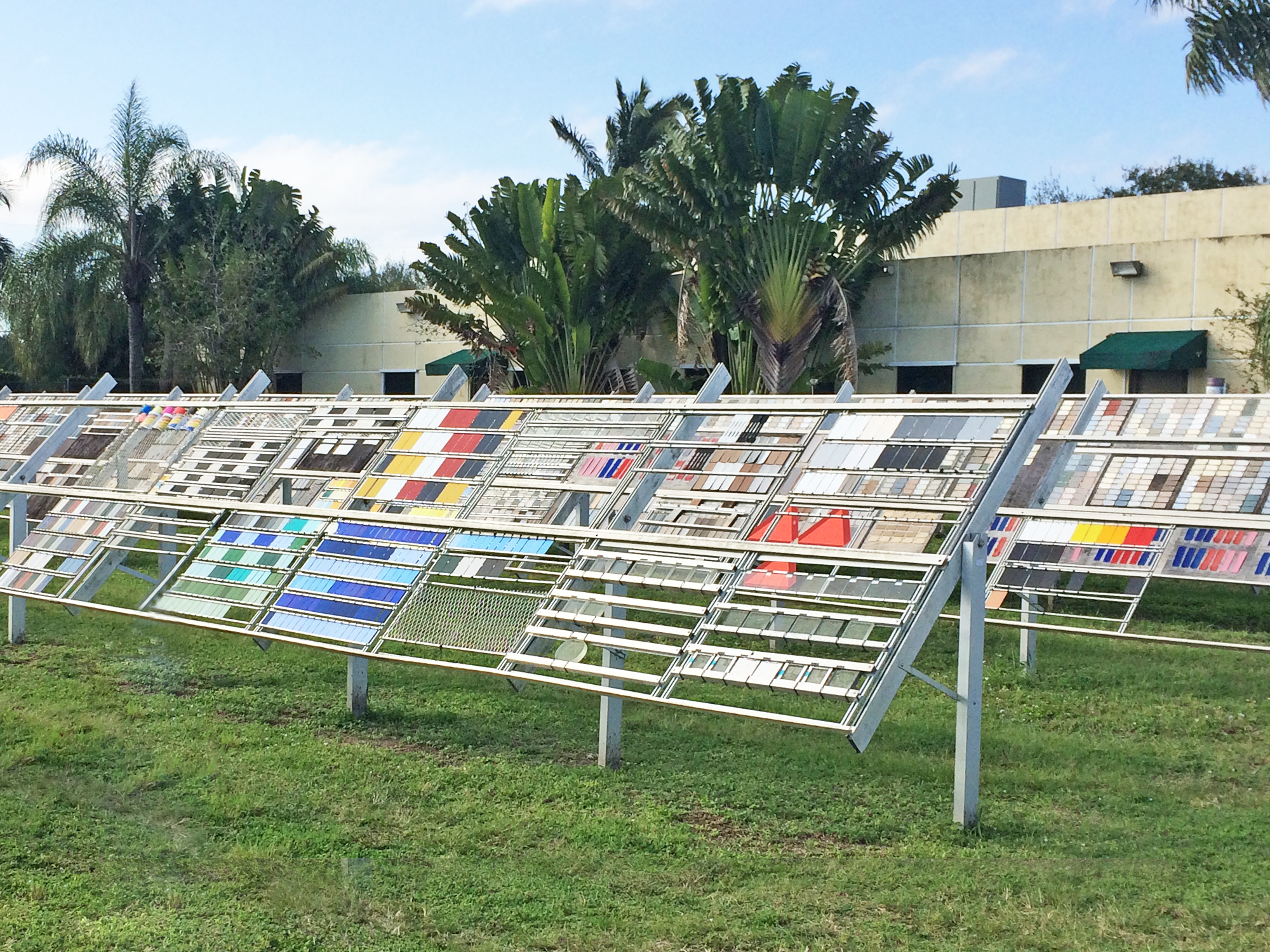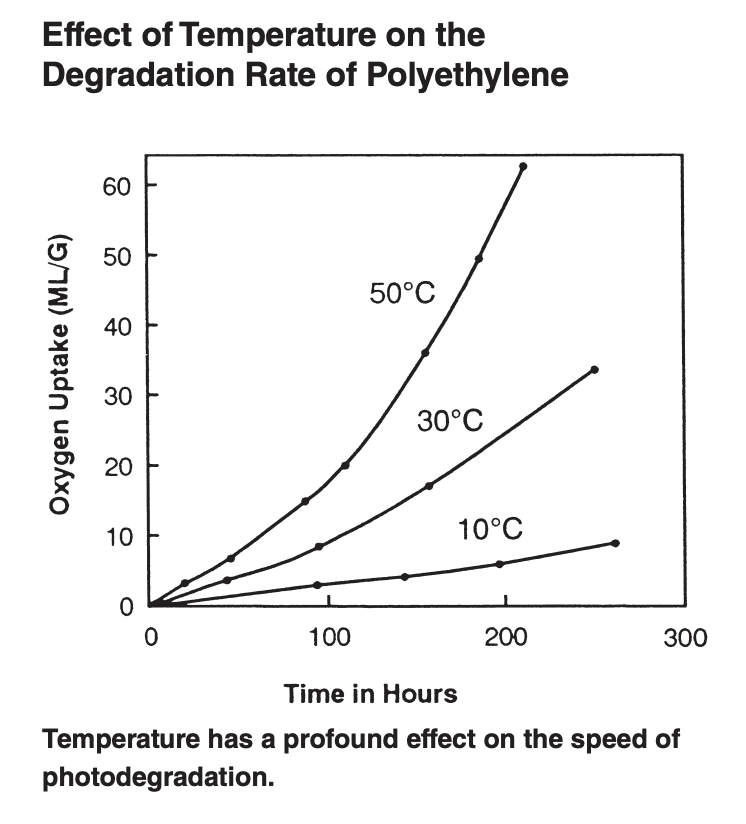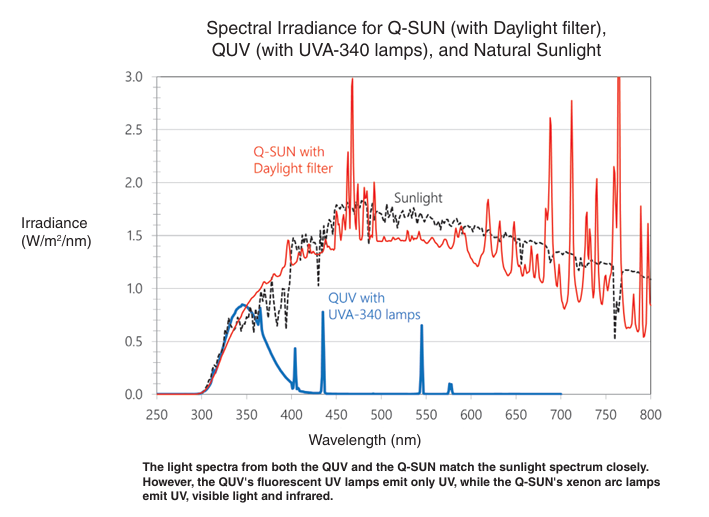LU-0833 Correlation Questions & Answers
Technical Bulletins
Posted 2023
Last Updated 2025
LU-0833
Q. How many hours in a Q-Sun Xenon Test Chamber or a QUV Weathering Tester equals a year of outdoor exposure?
This is a simple question, but unfortunately there is no simple answer. It is theoretically impossible to have a single "magic number" that you can multiply by weathering tester exposure hours to compute years of outdoor exposure. The problem is not that we just haven’t developed the perfect weathering tester yet. No matter how sophisticated or expensive you make your weathering tester, you still won’t find the magic factor. The biggest problem is the inherent variability and complexity of outdoor exposure situations. The relationship between tester exposure and outdoor exposure depends on a number of variables, including:
- The geographical latitude of the exposure site (closer to the equator means more UV).
- Altitude (higher means more UV).
- Local geographical features, such as wind to dry the test samples, or the proximity of a body of water to promote dew formation

The QUV is the world's most widely used weathering tester.
- Random year-to-year variations in the weather, which can cause degradation to vary as much as 2:1 in successive years at the same location.
- Seasonal variations (i.e., winter exposure may be only 1/7th as severe as summer exposure)
- Orientation of the sample (both angle and direction the specimen faces).
- Sample insulation (outdoor samples with insulated backing often degrade 50% faster than uninsulated samples).
- Operating cycle of the tester (hours of light and hours of wetness).
- Operating temperatures of the tester (hotter is faster).
- The particular material tested.
- The Spectral Power Distribution (SPD) of the laboratory light source.
Obviously, it is logically meaningless to talk about a conversion factor between hours of accelerated weathering and months of outdoor exposure. One is a constant condition, whereas the other is variable. Looking for a conversion factor requires pushing the data beyond the limits of its validity.
In other words: Weathering data is comparative data.
Nevertheless, you still can get excellent durability data from accelerated weathering testers. But you must realize that the data you get is comparative data, not absolute data. The most you can ask from laboratory weathering are reliable indications of the relative ranking of a material’s durability compared to other materials. In fact, the same thing can be said about Florida exposure tests. Nobody knows how a year in an outdoor “Black Box” exposure at 5° South compares to a year on a house or a car. Even outdoor testing gives you only relative indications of actual service life.
Comparative data, however, can be very powerful. For instance, you might find that a slightly altered formulation has over twice the durability of your standard material. Or you might find that among several suppliers offering what look like identical materials, some fail very quickly, most fail in a medium length of time, and a few fail only after prolonged exposure. Or you might find that a less expensive formulation has equivalent durability to your standard material that has given acceptable performance over, say 5 years, of actual service.

Many labs have successfully developed their own guidelines for converting Q-Sun or QUV hours into exposure hours.
Here is a good example of the power of comparative data. A coatings manufacturer was developing a new type of clear coating. Initial QUV tests caused severe cracking in 200 to 400 hours.This is much sooner than conventional coatings used for the same purpose. However, after 3 years of continual reformulation and retesting in the QUV, the coating was improved so that various formulations could withstand 2,000 to 4,000 hours in the QUV - much better than the conventional coatings. Subsequent parallel tests in Florida showed a similar 10:1 increase in durability. Yet if the coatings chemists had waited for the Florida data before changing their formulations, they would still be back in the early stages of reformulation, and the coating wouldn’t be the commercial success that it now is.
On the other hand, if you still insist on an approximate conversion factor, find it empirically. Despite the impossibility of a universal conversion factor, hundreds of labs have successfully developed their own internal guidelines for converting their Q-Sun or QUV hours into outdoor exposure hours. However, it is important to remember that these guidelines were developed from empirical comparisons of the lab’s own accelerated tests with their own outdoor exposures. Furthermore, the rule of thumb conversions are valid only for:
- The specific material tested.
- The specific set of lab tester time cycles and temperature.
- The specific outdoor exposure site and sample mounting procedure.
If you have outdoor experience with your materials, it shouldn’t take more than a few months to develop your own relationships. If you don’t have experience with your own materials, it may be possible to work with competitive materials that do have a history of outdoor service.
Rank Correlation
In addition, it is important to remember: “Correlation” means “Rank Correlation.” When someone asks, “How do the accelerated testers correlate with outdoors?” what they really should ask is “How well do rankings of materials’ durability in the accelerated testers duplicate the rankings of materials outdoors?” To measure rank correlation, we recommend Spearman’s rho, a statistical measure that is easy to compute and which does not require the type of strong assumptions about the data that are required by linear correlation measures. A study of QUV and Florida durability rankings of 27 automotive coatings produced rank correlations of up to .89 between QUV rankings and Florida rankings (1.00 is perfect rank-order correlation). The rank correlation between different Florida exposures was .88 to .95. In other words, the QUV can reproduce Florida rankings almost as well as Florida can reproduce itself.
Q. How much energy (Langleys, Joules, Watt-hours) do the Q-Sun and QUV produce?
This question sounds straightforward, but it is based on some erroneous assumptions. Generally the person asking this intends to take the light output of the testers (expressed in Langleys, joules, or watts/m2 ) and divide it by the intensity of outdoor sunlight to get a magic factor for converting accelerated tester exposure hours into outdoor exposure years. Unfortunately, there is no mathematically valid way to make such a calculation, because it runs counter to the most basic principles of accelerated weathering. (Not to mention that, by definition, the Langley refers only to the sun and not to other light sources.) The result of such a calculation is at best meaningless, and at worst totally misleading.
One reason such a computation is invalid is that it ignores the effect of wavelength. What determines the amount of photodegradation is not the total light dosage, but how that energy is distributed with respect to wavelength. A joule of UV light (short wavelength), for instance, can be more damaging than a joule of visible or infrared light (longer wavelength), depending on the material you are testing.

In addition, the amount of UV in sunlight varies quite a bit, which can have a tremendous effect on the weathering of samples. Measurements of total energy fail to reflect the wide variations in solar UV that occur from season to season, day to day and, in fact, hour to hour. For this reason, a number of studies have shown that in successive outdoor exposures where replicate samples received the same exposure in Langleys, there can be as much as a 7:1 variation in the amount of damage produced. In other words, the Langley is too inconsistent to be used as a standard measure of outdoor exposure. The conclusion is clear: the Langley may have valid uses, but certainly not in the field of laboratory weathering.
Even a measurement of Total UV (TUV), such as the “UV Langley” or “UV joule,” may be misleading because the same reasoning applies: within the UV, shorter wavelengths generally cause faster degradation to durable materials.
Here is an example of the wrong conclusions you can get from using measurements of total radiant energy to evaluate accelerated weathering testers. The QUV can use two types of lamps: UVA lamps with a peak emission at a wavelength of 340 nm, or UVB lamps with a peak at 313 nm. The UV-A lamps produce more total energy (and more UV light) than the UV-B lamps, so isn’t it reasonable to deduce that the UV-A lamps will produce faster degradation? Not always. Many materials will degrade slower with UV-A lamps because the UV they produce is longer wavelength UV. In the Q-Sun, you will find these same variations depending on the filters used.
Another reason you can’t compare the light intensities of the Q-Sun or the QUV with sunlight is that such procedures completely ignore the effect of moisture. We find that for many materials, the effects of rain and dew are more important than the effects of sunlight. This is often true even for phenomena like gloss loss and color change, which are sometimes considered to be UV-induced changes. If you don’t take moisture into account, you can’t possibly come up with a magic conversion factor.
Finally, a conversion computation based on light intensity is invalid because it ignores the effect of temperature. It is possible to choose a wide range of temperatures in an accelerated tester, and it is possible to have a wide range of temperatures in outdoor exposure. Temperature has a profound effect on the speed of photodegradation. We observe in our accelerated testers that in some cases a 10°C increase in test temperature can double the speed of degradation.
For more information, see Q-Lab Corporation technical bulletin LU-8030, Errors Caused by Using Joules to Time Laboratory and Outdoor Exposure Tests.
Q. What is the conversion factor between hours in a QUV tester and hours in a xenon test chamber?
This is another simple question with no simple answer. The shapes of the SPD curve are different for each type of tester. Therefore, there is no mathematically valid procedure for computing a ratio of photodegradation power. In addition, different filters can be used in xenon testers and different lamps can be used in QUV testers, which make it even more difficult to make comparisons to a QUV.
Furthermore, the testers use moisture mechanisms that are fundamentally different.
Finally, laboratory weathering is material-dependent. A material that is vulnerable to visible light and longer-wave UV will usually degrade much more quickly in a xenon tester. But a material that is vulnerable to shorter-wave UV will usully degrade much more quickly in a QUV.
